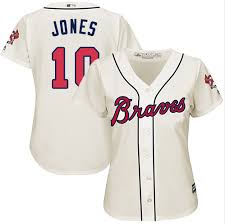I did feel like an “Old Sport” in my running “Shorts” this morning, dragging a sore left leg and extra weight on top of my concrete-like feet. It was slow going on Day #4129 of “The Streak,” thinking of how much longer I’ll be able to maintain this daily routine. I think this viral threat has aged me both physically and mentally. It’s hard to get going every day in a fight against an enemy we can’t see coming. Some of my favorite past-times have been taken away in the process, including basketball and baseball just for starters. As I mourn the lack of sports in my life, I at least wanted to write about it today!
To think I was on my way to Spring Training and in anticipation of March Madness when this whole pandemic started. The hotel where we were staying would soon empty and the restaurants began to slowly shut-down. We got on a plane to fly back, leary of what was to come in the way of self-quarantine, social distancing, and protective gear. My reality was the fact that all sports stopped when at first play was restricted to just fans. At least, we’d be able to watch on TV, but instead we’re stuck on re-play. Out of habit, I continue to check the ESPN app, but unfortunately there’s little to report.
I did run across Tim Kurkjian’s article about baseball uniform numbers and the greatest players in history to wear each one. It struck me because as a kid I was drawn to #10 when it came time to pick a uniform. It was because of my catching hero Sherm Lollar of the Chicago White Sox. I have his 1955 uniform in my collection, along with lots of cards, pictures, and stories about his career. I would imagine that many other kids made similar decisions in Little League based on their favorites.
#10 in the article was assigned to Chipper Jones of the Atlanta Braves, a top-four Hall of Fame third baseman. He was born as I turned twenty-one. Sherm sadly died five years later. I’m sure there are those that adopted #10 based on Chipper’s popularity. Sherm, I’m sure was far down the list of those wearing the number, since he will probably never inducted into the Cooperstown Club. Chipper’s #10 was ceremoniously retired by the Braves, while infielder Yoan Moncada currently wears it for the White Sox. Sparky Anderson, Dick Howser, Phil Rizzuto, Ron Santo, Tony LaRussa, Tom Kelly, and Michael Young all wore #10 and were honored by their respective teams by not allowing others to ever wear it again. Howser, Kelly, and Young have yet to be inducted nationally.
Kurkjiun reported that the Yankees were the first to put numbers on the back on their jerseys starting in 1929. “The numbers often corresponded to where the player hit the batting order, which is how Babe Ruth ended up with No. 3 and Lou Gehrig No. 4.” Other Yankees secured their place in numbers history with Derek Jeter #2, Joe DiMaggio #5, Mickey Mantle #7, Sherm’s rival Yogi Berra #8, Alex Rodriguez #13, Whitey Ford #16, and Roy Campanella #39. Many of my childhood baseball peers fought over Mickey and Yogi’s numbers, while #10 was usually always available.
Some kids wanted to be #1 like Ozzie Smith or #6 Stan Musial, particularly if they were Cardinals’ fans. #17 Dizzy Dean and the Gaslight Gang was slightly before my time. If you were a Reds’ fan, Barry Larkin #11 or controversial Pete Rose #14 were probably your top uniform choices. Ted Williams wore #9 while Red Sox traitor to the Yankees Johnny Damon #18, Tony Gwynn claims #20, Roberto Clemente #21,Clayton Kershaw #22, “Say Hey” Willie Mays #24, Barry Bonds #25, Wade Boggs #26, and Mike Trout #27. They are each Hall-of-Famers on Kurkjian’s list. With the current trends in free-agency, it’s more challenging for a player to retain the same number throughout their career, particularly if it’s retired by the team they join. Big bucks have also been rumored to change hands during team transitions since the number is part of a player’s brand.
In the higher ranges of uniform numbers, everyone wears No. 42 on Jackie Robinson Day. Hank Aaron wore #44 on his back, Nolan Ryan #30, Greg Maddux #31, and Sandy Kolfax #32. If you were into base-running speed you might crave the number 35 of Ricky Henderson fame. Orel Hershiser owns #55, the highest number on this particular list. Other pitchers like Goose Gossage chose #54, Don Drysdale #53, CC Sabathia #52, Randy Johnson #51, J.R. Richard #50, Hoyt Wilhelm #49, Tom Glavine #47, Lee Smith #46, Bob Gibson #45, Dennis Eckersley #43, Bartolo Colon #40, Curt Schilling #38, spit-baller Gaylord Perry #36, and Tom Seaver #41.
I’ve been skipping around quite a bit on the ESPN list with preference given to some of my more familiar favorites. For the record, these are all great players, with just a few yet to gain Hall-of-Fame status. The best defensive second-baseman in his opinion was #12 Roberto Alomar, Carlos Beltran tops those wearing #15, followed by #20 Mike Schmidt, #23 Ryne Sandberg of the Cubs, Bert Blyleven #28, Rod Carew #29, Eddie Murray #33, Big Papi, David Ortiz #34, Keith Hernandez #37, and last but not least Torii Hunter #48. At this stage, too many uniform numbers have already been claimed forever, so modern day players will have to start at #56 to make a lasting numerical impression. Who will be the first to wear #100 or #1000? Manny Ramiriez and Aaron Judge have already claimed #99, while Yasiel Puig wears #66. It’s a number game – what’s lucky for you?

Leave a Reply